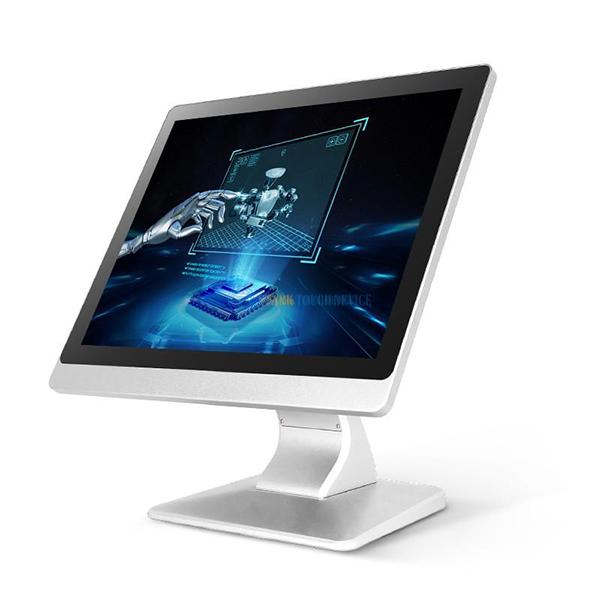Welcome STARK TOUCH DEVICE!
Solutions
Professional tools for cleaning the interior of industrial control computers
Essential Professional Tools for Cleaning Industrial Control Computer Internals
Industrial control computers (ICCs) operating in demanding environments accumulate dust, debris, and contaminants that can degrade performance or cause failures. Cleaning their internal components requires specialized tools designed to prevent damage while effectively removing particles. This guide explores the critical tools professionals use to maintain ICC internals safely.

Airflow-Based Cleaning Tools
Controlling airflow is a primary method for removing loose debris from sensitive electronic components without physical contact.
Low-Pressure Compressed Air Systems
Industrial-grade compressed air systems with adjustable pressure settings are ideal for blowing dust from hard-to-reach areas like heatsinks, fan blades, and circuit board crevices. Unlike consumer-grade canned air, these systems provide consistent pressure and avoid cold-induced moisture condensation, which could short-circuit components. Operators should use nozzles with variable airflow patterns to direct cleaning precisely.
Anti-Static Air Guns
Static electricity generated during airflow can damage electronic components. Anti-static air guns incorporate ionization technology to neutralize charges as air exits the nozzle. These tools are crucial when cleaning memory modules, expansion cards, or other static-sensitive parts. Some models feature ergonomic designs for extended use in tight spaces.
Vacuum Systems with HEPA Filtration
For environments with fine particulate matter, vacuum systems equipped with High-Efficiency Particulate Air (HEPA) filters prevent recontamination during cleaning. These vacuums use soft-bristled attachments to avoid scratching surfaces while capturing particles as small as 0.3 microns. Look for models with grounded hoses to prevent static buildup during operation.
Precision Brushing and Swabbing Tools
Physical removal of stubborn contaminants requires tools that reach small spaces without causing damage.
Conductive Brushes with Soft Bristles
Soft-bristled brushes made from conductive materials safely dislodge dust from connectors, slots, and component edges. The conductivity prevents static charge accumulation during use. Choose brushes with angled or tapered heads to access recessed areas. For delicate components, ultra-fine brushes with bristle diameters under 0.1mm are available.
ESD-Safe Swabs and Picks
When cleaning around pins, sockets, or intricate circuitry, ESD-safe swabs with foam or microfiber tips provide controlled application of cleaning solutions. These swabs come in various shapes, including pointed, chisel-tip, and mini-pad designs, to match specific cleaning needs. For removing thermal paste or adhesive residues, non-abrasive plastic picks with rounded edges are effective.
Magnetic Dust Removal Tools
Some cleaning scenarios involve magnetic particles from industrial processes. Magnetic dust removal tools feature retractable tips coated with non-abrasive material that attract and lift ferrous debris without scratching surfaces. These tools are particularly useful for cleaning power supply units or motor control boards exposed to metal shavings.
Liquid Cleaning Solution Application Tools
When solvents or cleaning agents are necessary, precise application prevents overuse and component damage.
Precision Spray Bottles with Fine Mist
For applying isopropyl alcohol or specialized electronic cleaning solutions, spray bottles with adjustable nozzle settings deliver fine mist patterns. This ensures even coverage without pooling liquid on sensitive areas. Some bottles incorporate anti-drip mechanisms to prevent accidental spills during use.
Disposable Lint-Free Applicators
Lint-free pads or wipes made from materials like cellulose or polyester are essential for wiping down components after liquid cleaning. These applicators won’t leave fibers behind, which could cause short circuits. For tight spaces, pre-saturated wipes in sealed packets provide convenience without the risk of contamination from reusable cloths.
Micro-Dosing Syringes
When cleaning small connectors or applying lubricants to moving parts, micro-dosing syringes allow precise control over liquid volume. These syringes typically feature blunt-tip needles to avoid puncturing components and are available in capacities ranging from 1ml to 10ml, depending on the task’s scale.
Safety and Inspection Tools
Ensuring cleanliness and preventing future issues requires tools for monitoring and protection.
Magnifying Inspection Tools
After cleaning, magnifying lenses or digital microscopes help verify that all contaminants have been removed. These tools reveal microscopic particles that might otherwise go unnoticed. Some models include built-in lighting and adjustable magnification levels for detailed examination of solder joints or component leads.
ESD Monitoring Equipment
Continuous monitoring of electrostatic discharge levels during cleaning operations protects sensitive electronics. Wrist strap testers, grounding mats, and field meters provide real-time feedback on ESD risks. Portable ionizers can also be used to neutralize airborne ions in the workspace.
Component Handling Trays
During cleaning, components like RAM modules or hard drives should be placed in anti-static trays to prevent accidental damage. These trays often feature compartmentalized designs to organize parts and include conductive coatings to dissipate static charges safely.
By using these professional tools, technicians can maintain industrial control computer internals effectively while minimizing the risk of electrostatic damage or mechanical harm. Proper tool selection ensures compliance with industry standards and extends the lifespan of critical computing equipment.


